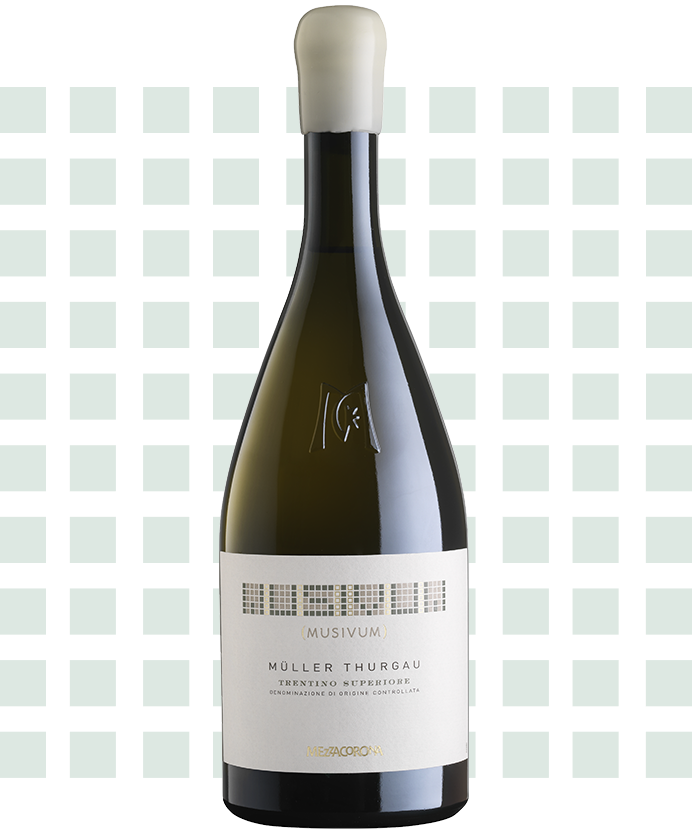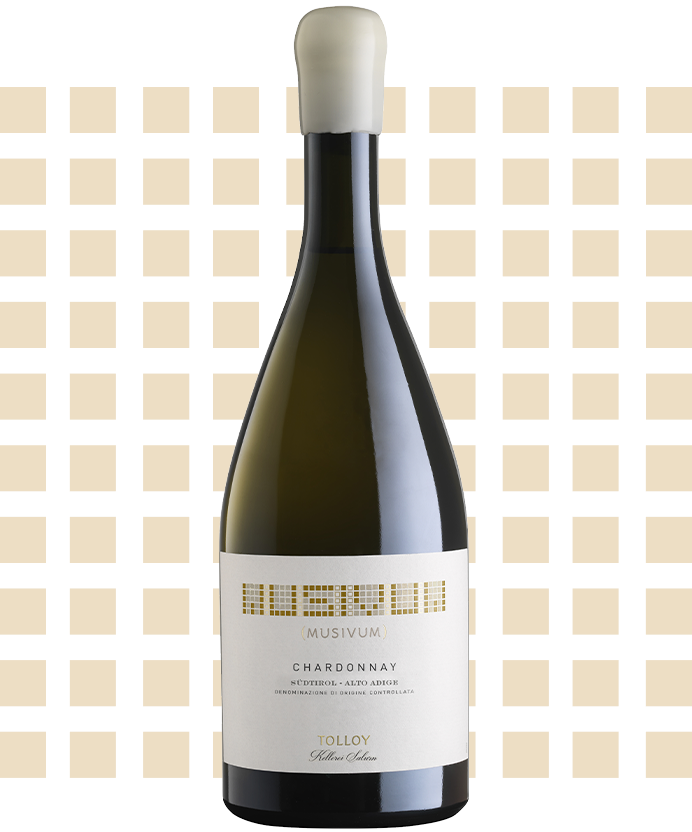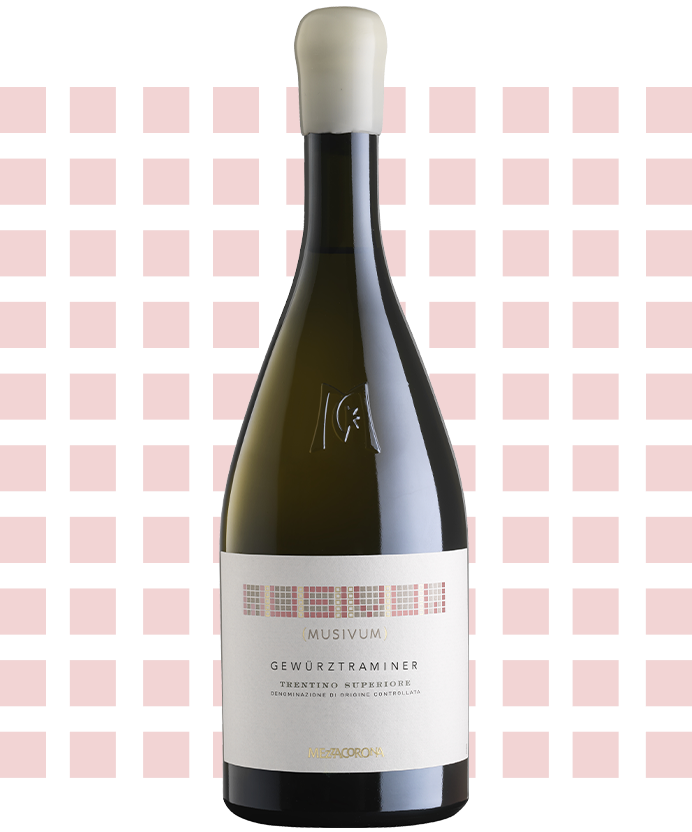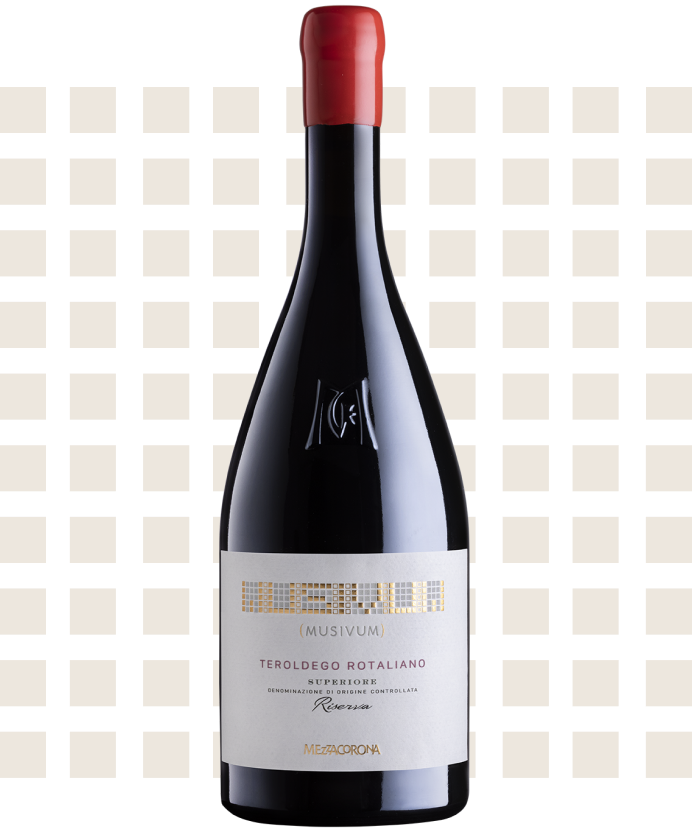
MARZEMINO
TRENTINO DOC SUPERIORE

alcohol content 14%

2483 bottles

serving temperature 16-18°C
About Marzemino
A wine with a unique and recognisable personality, it expresses itself with an intriguing aromatic profile that ranges from ripe and warm fruit tending to passito aromas such as plum and morello cherry, to a spiciness of eucalyptus and coriander with balsamic and almond notes. The palate is offered a dense but delicate structure and a fruity freshness in the aftertaste makes it a great red.

The vineyards of the Ala Winery lie in the southernmost part of the Adige Valley in Trentino. Here the mountain ranges called Piccoli Dolomiti and Baldo near Lake Garda cover an area which stretches down towards the Venetian plain. It is a land rich in memories and was the scene of disputes between the Austrian Empire and the Serenissima Republic of Venice. It was thanks to these relations and the ensuing trade of the people who populated it that Marzemino came to this land from the distant and evocative Asia Minor.
Marzemino grapes are cultivated on the best soils which have been created by the erosive action of the glaciers which formed gentle hills and fertile promontories. They are grown on land which boasts the best exposure, optimised by the particular orientation of the valleys. Here, this grape succeeds in expressing its potential to the full, reaching the right ripeness and creating wines with a delicate aroma and harmonious flavour.
Cultivated on the classic Trentino pergola, Marzemino is a vine that requires to be pruned slowly and carefully and its young, green shoots are very fragile and sensitive to the effects of wind. Only the skilful work of the winegrower, through their patient tying and arrangement of the shoots can select the best shoots for grape production.
Marzemino grapes are cultivated on the best soils which have been created by the erosive action of the glaciers which formed gentle hills and fertile promontories. They are grown on land which boasts the best exposure, optimised by the particular orientation of the valleys. Here, this grape succeeds in expressing its potential to the full, reaching the right ripeness and creating wines with a delicate aroma and harmonious flavour.
Cultivated on the classic Trentino pergola, Marzemino is a vine that requires to be pruned slowly and carefully and its young, green shoots are very fragile and sensitive to the effects of wind. Only the skilful work of the winegrower, through their patient tying and arrangement of the shoots can select the best shoots for grape production.
Once the grapes have matured, half of the Marzemino bunches are harvested exclusively by hand, checked and delicately placed in special small crates to begin the drying period in cellars at a controlled temperature and humidity. The grapes further evolve and mature for several months and through the natural drying process they develop notes and scents that will give the wine harmony and richness. For the other half of the clusters, we wait for maximum, natural ripening before the rains arrive, and then they are harvested by hand and pressed.
The fresh grapes undergo a very slow and gentle crushing, so as not to only partially break the berrie in order to prolong the subsequent fermentation. The crushing of the dried grapes takes place in late autumn, after months of drying in the drying lofts. Given the firmness of the berries, they are 'shelled': the little juice that is released will be the base on which the yeasts will begin their very slow fermentation.
Fermentation of the fresh grapes: following two nights' rest at 8°C, the crushed grapes are inoculated with specific yeasts that will enhance the organoleptic characteristics typical of the variety. Fermentation is slow, at a controlled temperature and pumping over is brief but frequent. Fermentation of the raisins: the addition of the selected yeasts takes place immediately, although the temperature of the must is rather low given the season (7-9°C). Fermentation is very slow and can last up to weeks. During this period the wine extracts the best components from the skins and seeds, enhancing its structure and aromatic richness and character.
After malolactic fermentation, the two components rest and sediment settles for a few months before being transferred to oak barrels. The various components are then combined to prepare for bottling and the subsequent phase of refinement occurs in the bottle.
A wine boasting a unique and recognisable personality, it expresses itself with an intriguing aromatic profile that ranges from ripe and warm fruit, tending to passito aromas such as plum and morello cherry, to a spiciness of eucalyptus and coriander with balsamic and almond notes. The palate is offered a dense but delicate structure and its fruity freshness in the aftertaste makes it a great red.
Wines









